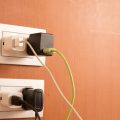Understanding Your Home’s Electrical Capacity
Before installing an EV charging point in your British home, it’s crucial to assess whether your property’s electrical system can safely accommodate the additional load. Most UK homes operate on a single-phase supply, typically rated at 60A or 100A for the main fuse. Begin by locating your consumer unit (fuse box) and identifying the main fuse rating. You should also check if your household’s existing demand (including appliances like electric showers or ovens) leaves enough spare capacity for a charging unit, which commonly requires a dedicated 32A circuit for a standard 7kW charger. If you’re unsure about these ratings, consult your Distribution Network Operator (DNO) or a qualified electrician.
| Electrical Aspect | Typical UK Standard |
|---|---|
| Main Fuse Rating | 60A or 100A |
| Household Supply Type | Single-phase (most homes) |
| Standard Charger Requirement | Dedicated 32A circuit for 7kW |
This initial assessment ensures that your installation is both safe and compliant with UK regulations, reducing the risk of overloading your home’s electrical infrastructure. Taking the time to understand your home’s capacity is a smart first step in protecting your investment and ensuring peace of mind as you transition to electric vehicle ownership.
Choosing the Right EV Charger
When it comes to installing a home EV charging point in your British home, selecting the most suitable charger is a crucial step. The UK market offers a variety of options, each with distinct features tailored to different needs. Below, we explore key factors you should consider before making your decision.
Types of Chargers Available in the UK
| Charger Type | Charging Speed (kW) | Typical Charging Time* | Best For |
|---|---|---|---|
| 3-Pin Plug (Standard Socket) | Up to 3 kW | 8–12 hours | Occasional use, emergencies |
| Home Fast Charger (Type 2) | 7–22 kW | 3–8 hours | Everyday home charging |
| Rapid Charger** | 43–50 kW+ | 30–60 minutes | Mainly public locations, not typical for homes |
*Charging time may vary depending on vehicle battery size.
**Rapid chargers are generally not installed at homes due to high power requirements and costs.
Compatibility with Your Electric Vehicle (EV)
It’s essential to ensure the charger you choose is compatible with your specific EV model. Most modern electric vehicles and home chargers in the UK use the Type 2 connector as standard. However, always check your car’s manual or consult your dealership for confirmation. Some plug-in hybrids and older models may require an adaptor or have different specifications.
Smart Features and Integration with Home Systems
Many new chargers offer smart technology, allowing integration with your home’s energy management system or apps on your mobile device. These features can help you schedule charging during off-peak hours, monitor electricity usage, and even take advantage of tariffs that reward you for charging when demand is low. Consider whether these capabilities are important for your household, especially if you have solar panels or are looking to optimise your energy bills.
Summary: Key Considerations When Choosing Your Charger
- Charging speed: Faster chargers save time but may cost more upfront.
- Vehicle compatibility: Confirm connector type and supported power output.
- Smart features: Look for scheduling, remote control, and energy monitoring functions.
- Aesthetics & installation location: Think about where the unit will be mounted for ease of use and weather protection.
- Future-proofing: Consider upcoming EV purchases or upgrades that could require higher power output or additional functionalities.
Selecting the right charger sets the foundation for a seamless and efficient home EV charging experience in line with British standards and lifestyle preferences.
![]()
3. Securing Permissions and Grants
Before you can proceed with installing a home EV charging point in the UK, it’s essential to secure any required permissions and explore available financial support. Depending on your living situation, you may need consent from various parties or local authorities. For homeowners, checking local council requirements is crucial, especially if your property is listed or located within a conservation area. If you’re renting, you’ll need to obtain written permission from your landlord before any installation work begins.
Permission Requirements
| Living Situation | Who to Contact | Permission Needed? |
|---|---|---|
| Homeowner (Freehold) | Local Council (if listed/conservation area) | Sometimes |
| Leaseholder/Flat Owner | Building Management/Landlord | Yes |
| Private Tenant | Landlord | Yes |
UK Government Grants for EV Chargepoints
The UK government offers several grants to help offset the cost of installing an EV chargepoint at home. One of the most popular is the OZEV EV chargepoint grant (previously known as the Electric Vehicle Homecharge Scheme). This grant could cover up to 75% of the installation cost, capped at £350 per installation. Eligibility criteria apply, including owning, leasing, or having ordered a qualifying electric vehicle and having dedicated off-street parking at your property.
OZEV Grant Eligibility Criteria
- You must have off-street parking at your property.
- You must own, lease, or have ordered a qualifying electric vehicle.
- The installer must be OZEV-approved.
How to Apply for Grants
- Select an OZEV-approved installer—they will typically handle the application process on your behalf.
- Gather evidence of vehicle ownership/lease and proof of address.
- Your installer submits your documents and claim for the grant during the installation process.
By understanding these permission requirements and taking advantage of available grants, you can make the installation process smoother and potentially reduce your out-of-pocket expenses significantly.
4. Selecting a Certified Installer
Choosing the right installer for your home EV charging point is a crucial step in ensuring both safety and compliance with UK regulations. In the United Kingdom, it is highly recommended—and often required—to hire an OZEV-approved (Office for Zero Emission Vehicles) installer. These certified professionals are not only trained in the latest installation standards, but they also ensure your charging point qualifies for any government grants or incentives, such as the EV chargepoint grant.
Why Choose an OZEV-Approved Installer?
- Compliance with UK Safety Standards: Only certified installers are authorised to carry out installations that meet current British safety regulations.
- Access to Grants: Using an approved installer is typically a condition for accessing government funding schemes.
- Peace of Mind: Certified professionals are regularly assessed and must adhere to best practices, reducing the risk of faulty installations.
Comparing Quotes and Credentials
It’s wise to obtain multiple quotes before making your decision. When comparing potential installers, consider both cost and credentials to ensure you’re getting value without compromising on safety.
| Criteria | What to Look For |
|---|---|
| Certification | OZEV approval, NICEIC or NAPIT membership |
| Experience | Track record of similar home installations |
| Insurance | Public liability insurance cover |
| Warranty | Workmanship and product warranty details |
| Customer Reviews | Positive feedback from UK homeowners |
How to Verify an Installers Credentials
- Ask for their OZEV approval reference number.
- Check their company profile on official directories (such as the government’s list of approved installers).
- Request proof of insurance and recent customer references.
Your Next Step
Selecting a certified installer is not just about ticking a box for compliance; its about safeguarding your investment and ensuring long-term reliability for your home EV charging solution. Take time to research, compare, and choose wisely before moving forward with installation.
5. Preparing for Installation Day
Getting ready for your home EV charging point installation is crucial to ensure a smooth and efficient process. Here’s how you can prepare your property and know what to expect when the installer arrives:
Clear the Area
Before the installer arrives, make sure the area where the charging unit will be fitted is tidy and free of obstacles. This includes removing vehicles, bikes, garden tools, or any clutter that might hinder access. If your charger is being installed in a garage or on an exterior wall, create at least 1 metre of clear space around the installation spot.
Arrange Power Supply Access
The installer will need easy access to your property’s main consumer unit (fuse box) as well as any electrical meters or isolator switches. It’s helpful to unlock doors or gates leading to these locations ahead of time. If you live in a flat or terraced house, notify building management if necessary so communal areas are accessible.
Checklist: Property Preparation
| Task | Details |
|---|---|
| Clear Installation Area | Remove obstructions near the chosen wall or garage spot |
| Access to Consumer Unit | Ensure fuse box and electric meter are accessible |
| Parking Space Availability | Keep your vehicle off the driveway for work access |
What to Expect on Installation Day
On installation day, a qualified electrician or approved installer will arrive at the agreed time. They’ll first review your property setup, confirm the installation location, and discuss any last-minute questions with you. The installer will switch off your electricity temporarily during connection – this usually lasts less than an hour.
Top Tips for British Homeowners:
- If possible, be present during installation to answer questions.
- Have details of your Wi-Fi available if you’ve chosen a smart charger.
- Check if your installer offers guidance on using the new charging point before they leave.
A bit of preparation goes a long way in making sure your home charging solution is installed efficiently and safely, paving the way for convenient EV ownership in Britain.
6. Registration and Ongoing Maintenance
Once your home EV charging point is installed, the next essential step is to register it with your energy supplier or a compatible smart app. Registration not only allows you to monitor your energy consumption but may also qualify you for special tariffs designed for EV owners, such as off-peak rates that can help reduce charging costs. Many UK energy suppliers support seamless integration with popular smart charging apps, making this process straightforward.
How to Register Your Charging Point
| Step | Description | Who to Contact |
|---|---|---|
| 1. Gather Documentation | Collect installation certificates and charger details. | Your installer or manufacturer |
| 2. Contact Energy Supplier | Inform them of your new EV charger and ask about relevant tariffs. | Your energy provider (e.g., British Gas, Octopus Energy) |
| 3. Register via Smart App | Set up your charger on a recommended app for monitoring and scheduling. | App support (e.g., Pod Point, Ohme, or manufacturer’s app) |
| 4. Set Up Notifications | Enable alerts for usage reports and maintenance reminders. | Within the app settings |
Tips for Ongoing Maintenance
To ensure your home EV charging point remains safe and efficient over time, regular maintenance is crucial. Here are some practical tips:
- Visual Inspections: Check cables, sockets, and connectors regularly for wear or damage.
- Keep It Clean: Wipe down the unit occasionally and keep the area free from debris.
- Professional Servicing: Have a qualified electrician inspect your charger annually to ensure compliance with UK safety standards.
- Monitor Software Updates: Keep your charger’s firmware up to date through its smart app or manufacturer’s website for the latest features and security patches.
- Troubleshoot Early: If you notice irregular charging behaviour or error messages, contact customer support promptly to avoid bigger issues down the line.
The Importance of Ongoing Care
A well-maintained EV charging point not only maximises efficiency but also extends the lifespan of your equipment. Proper registration ensures you benefit from lower tariffs and real-time monitoring, while regular upkeep keeps everything running smoothly—giving you peace of mind every time you plug in at home.


